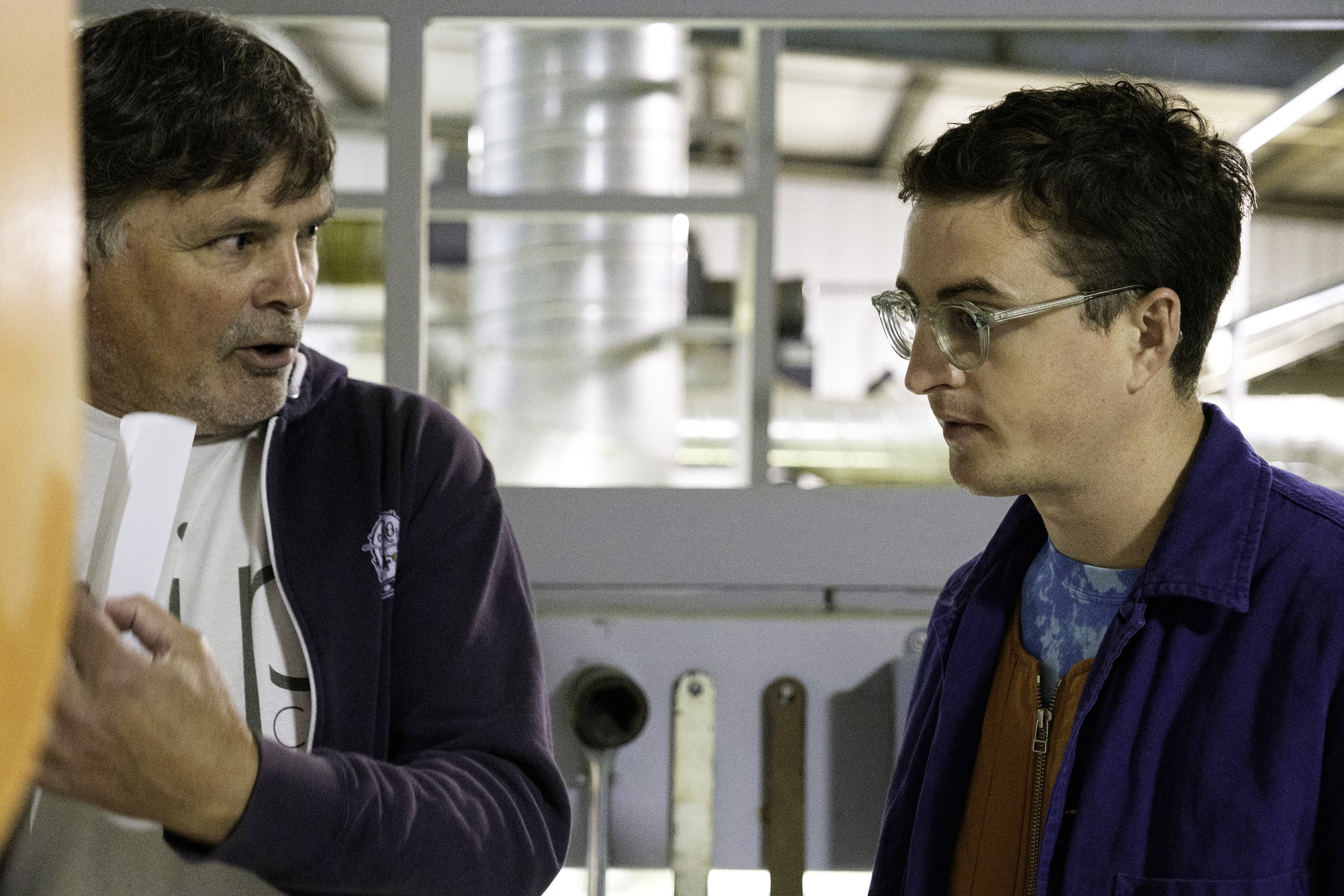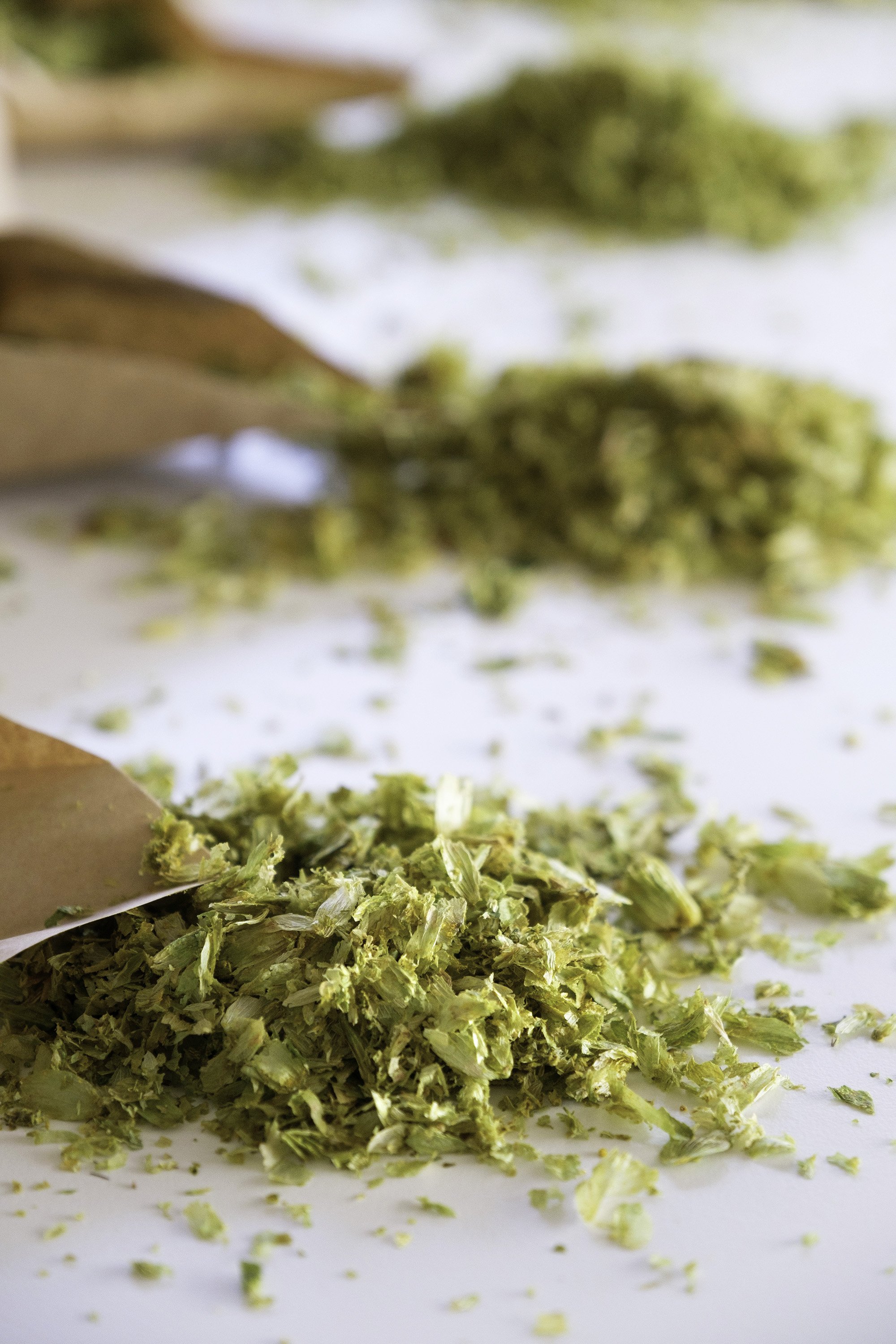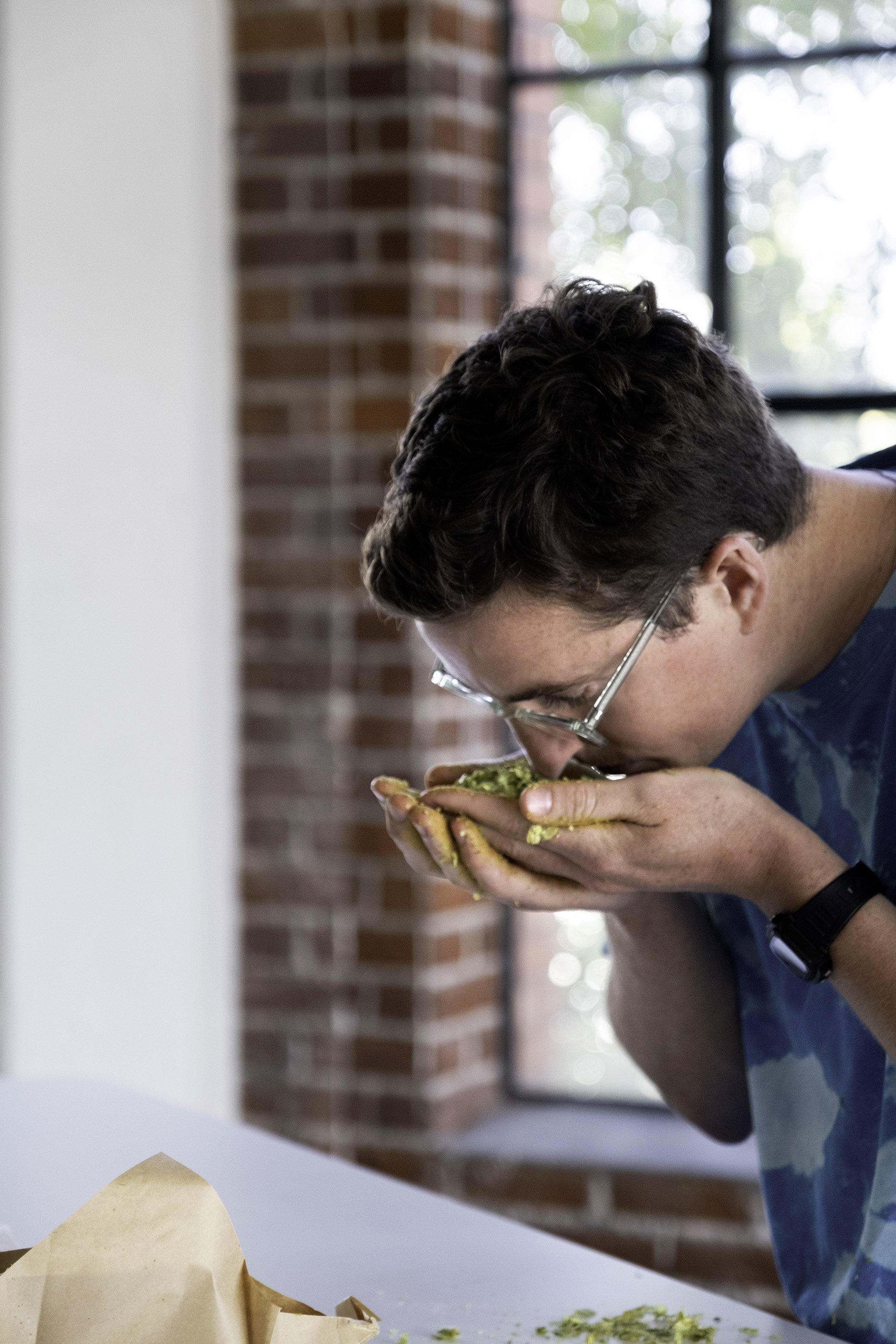Strawberry Fields Forever — How Oregon’s Indie Hops is Developing the Hops of Tomorrow
“Our goal is to come up with unique and interesting hop varieties that are very, very exciting to craft beer makers,” Jim Solberg, CEO and co-founder of Indie Hops, tells me.
Jim and his co-founder Roger Worthington are old friends from Corvallis, Oregon. “We grew up around the hop fields,” he continues. This was before the explosion of the American craft beer industry that would shape the state. As Jim and Roger watched that hype develop, it was clear to them that a greater variety of hops would soon be in demand, from increasing numbers of experimental craft brewers. They launched Indie Hops in 2009.
“We were wide-eyed and naïve coming into the industry,” Jim says. “Everybody scrambled to be a part of that transition.”
Indie Hops formed a partnership focused on hop research and breeding with Oregon State University (OSU), breathing new life into the university’s well-established hop research, which has been evolving since scientists planted hops on the campus in 1893. The business provides 100 per cent of the program’s funding and sets direction for what they want to achieve. But it’s truly a team effort to bring a new hop into the world.
Photography by Digby Fullam, supplied courtesy of Loughran Brewers Select
“There’s a lot of latitude for the hop researcher, Shaun Townsend,” Jim says. Shaun is an associate professor in the university’s College of Agricultural Sciences. In the Aroma Hop Breeding Program, Shaun focuses on developing hop cultivars adapted for Oregon growing conditions, paying close attention to essential oil quality.
The Indie Hops pellet mill is the first in the state, and when they decided to produce pellets, they found that a lot of existing mills supplied to the brewing industry just wouldn’t fit with their needs. Jim points out that the hop industry was heavily focused on alpha acid production (alpha acids being the primary bittering component in hops), and the process and operations of the mills were very aggressive.
“They would run excessively hot, you’d get kind of a glassy sheen on the outside of the pellets from the hops being burned,” Jim says. This meant damage to the oils, and lots of hop character left on the table.
“This seems like ancient history now,” Jim says, even though, as he acknowledges, it was only fourteen years ago. “It was an arms race for bitterness.”
Jim wanted a way to get hops into pellet form without affecting oil composition. He chose to work with a company that produced pellet machines used for the low temperature pelleting of alfalfa, which is often used as rabbit feed. After testing the machinery, Jim found that it would work well for hop pelleting at lower temperatures.
There are lots of climate factors working against the hops of tomorrow. For example, producers will need to be adept at dealing with more intense heat and reduced winter chill. At the OSU Experimental Yard, Shaun looks for the strongest plants. He works to harvest the genotypes that are viable from an agronomic standpoint, taking into consideration factors like disease and pest resistance, and yield. And as the climate emergency worsens, choosing varieties that can perform with fewer chemical inputs in the field is a big priority for Jim.
“We say [to Shaun] ‘don’t even send us a new genotype to evaluate for sensory and market potential unless you feel pretty good about it from an agronomy standpoint’,” he says. “You just don’t want to get all excited about a hop that is brilliant [in terms of] brewing characteristics and then find out… you’ve got to cover it in chemicals.”
Having a program where they can thoroughly vet each selected hop helps the Indie Hops team to choose the best adaptations. And this effort to select hardy and adaptive hops hasn’t come a moment too soon. “We’ve had some really surprising weather events hit us in the last few years,” Jim says. “Even the growers who are very competitive and say, ‘I can grow anything anywhere’... had kinda backed up a few steps.”
The Indie Hops team evaluates the newly harvested genotypes from both a sensory and a market potential standpoint. One common aspect of this process is the dry rub, which is as simple as it sounds: taking some hop cones and rubbing them. This bursts the lupulin glands, warming the oils, and allowing the team to smell the aromas released. If they find something that they want to do more detailed testing on, they move those hops into a program that includes IP, and in the next phase of evaluation, they get farms involved and do some pilot brewing.
“For promising varieties that we decide to advance to nursery trials, we plant 16 plants of each variety into two different farm locations,” Jim explains. At this stage, the farmers are caring for the plants whilst Indie Hops continue communicating with Shaun, and brewery customers. Then, when they decide to launch a variety commercially, they begin planning for that with the farms. Hops grown during the advanced nursery stage are harvested by Shaun and his crew using a portable hop harvester.
““Some of the folks jokingly refer to it as ‘rock concert cannabis.’””
“It is a small-scale trial and therefore too small for the farms to process with their commercial scale machinery,” Jim says. The advanced nursery phase is helpful in allowing the team to see how hops do in that setting. “We get to really get that sense of, does this thing perform above average?”
The news isn’t always good, and plenty of patience is required. Jim highlights a couple of cases where a variety seemed exciting but had indigenous wild hop genetics, and the character of the hops and structure of the cones started to change in the third year of evaluation, making him hesitant to put them on the market. In other cases, a hop that seemed promising and was growing well turned out to be frustratingly hard to harvest, with cones that wouldn’t easily separate from the plant.
For those that pass muster, brewing trials await. “For pilot brewing trials with hops harvested from the advanced nurseries, we choose breweries based on beer style that we feel the hop is likely best suited for,” Jim says. “For example, current trials taking place on a variety we believe is well suited for German Pilsner are being trialled with customers of ours that are very skilled lager brewers.”
Moving a hop forward towards a commercial release is always something of a leap of faith. But for a hop that Jim and the team have already started falling in love with, it’s an easier decision. Strata was released in 2018 following the first commercial harvest, and Jim was convinced that people would like it.
“As we did some small-scale pilot brews with customers and put the beers into their taproom for testing, that’s exactly what happened,” he says. Strata’s juicy, sticky, and fruity profile was a big hit.
“Some of the folks jokingly refer to it as ‘rock concert cannabis’,” Jim says. “There is a strawberry component, there is a passionfruit component… depending on how you use the hop you’ll get a ruby red grapefruit element.”
The first time I tried a beer with Strata, the depth and breadth of the juicy citrus and tropical fruit notes leapt out at me. The flavours seemed fresher and more vibrant than with some other hops, and lingered gently, with just the right amount of bitterness to make me ready for another sip. Put simply, enjoying a beer brewed with Strata hops feels effortless—though breeding and growing a hop as great as Strata is anything but.
Theo Freyne of DEYA Brewing, based in Cheltenham, UK, sources Strata through a close relationship with Loughran Brewers Select, who count Indie Hops among their suppliers. [Disclosure: Loughran Brewers Select is a sponsor of Pellicle.] For a special release of the brewery’s flagship pale ale, Steady Rolling Man, he decided to switch to Strata, in place of the usual dry hop, whilst keeping the rest of the base recipe the same: oats in the grain bill, a NEIPA water profile, and an English ale yeast. Theo thinks that the Strata hop is very well suited to modern juicy IPA styles—including in single hop beers.
“I find it very well-rounded,” he says, pointing to notes of orange and pineapple. “You can use it on its own.”
In 2019, and again in 2023, Theo was able to attend hop harvest in the Pacific Northwest, an experience which he values highly for the chance to learn more about his beer’s raw materials. “I think it’s a real mixture of benefits,” he says. “From a purely brewing point of view, being able to guarantee the supply of something that you’ve selected is good to have.”
““Being able to guarantee the supply of something that you’ve selected is good to have.””
For now, Jim says, there’s plenty to go around, though at first, when lots of brewers were excited and clamouring to get their hands on it, it was harder to keep up with demand. “We were running out of it each year until last year.” As interest grew, the bumper crop of 2022—15% above average yield—was a welcome bonus. Jim adds that whilst some breweries want to use more, many of them are backed up with inventory for other hops, so Strata is still quite new to lots of people.
This success of Strata provided the basis to go further. Luminosa was launched last year, named for its brightness, with fresh notes of peach, mango, and lemonade. Jim describes it as like being transported to a Caribbean beach. “There’s a distinctive kind of candied orange peel [flavour].” He notes that many people have come to love this hop in hazy beers especially.
Luminosa is quite different from Strata, which can stand on its own in a single hop ale. “Where Strata has maybe more depth… deep flavours that fill out a beer 100% by itself, Luminosa maybe doesn’t fill out a beer all by itself as completely as Strata does,” Jim says. And though it may not be able to pad out a hop profile alone, it is fantastic when combined with complementary hops.
At Cloudburst Brewing in Seattle, head brewer and founder Steve Luke agrees that Luminosa plays well with others, melding well with complementary flavoured hops or adding depth with hops that are more assertive. He is impressed with the performance of Luminosa in hop-forward styles, when looking for soft notes of apricot and meyer lemon. “I think it can be a little herbal too in that realm,” he says. “I'd characterise it as low frequency but impactful.”
Matt Friesen, head of production at Field House Brewing Co in British Columbia, also had a great experience with Luminosa hops, describing them as “very soft and juicy without a lot of grassiness or bitterness when dry hopped with.”
Last year was the first harvest for yet another new hop—Audacia. It comes from noble hops, crossed in the breeding program with a male related to Strata, and is named for being a sassier version of a classic noble hop. Audacia has notes of sweet and tart berries, like pomegranate, lingonberry, red current, and huckleberry. There are also some floral notes, such as rose, lilac, and lavender.
“There are a number of hops that have floral components, but it’s kinda hard to keep it in the beer,” Jim says. But with Audacia, he has found that these delicate floral notes have some staying power. Jim suggests that lower ABV pale ales with stripped down malt character in the grain bills can really showcase this hop.
At Sig Brewing Company in Tacoma, head brewer Jeff Stokes is early in his explorations with Audacia but is already a fan. So far, he has used Audacia just once, in a Pacific Northwest IPA. “My take on a PNW IPA is one that is balanced between fruit, bitterness,” Jeff says, adding that he feels it should “come in clear and with a little more character than a typical west coast IPA.”
He used Audacia as both a whirlpool and dry hop addition, and dry hopped with Strata. Then, he selected a British yeast strain to coax out some stone fruit character. “Honestly this was one of my favourite IPA's I've brewed in a long time,” Jeff says. “The combination of Audacia and Strata were like a symphony of ripe berries reminiscent of summer picnics.”
Next, he’s planning a West Coast Pilsner, as a collaboration with another Washington state brewery, and plans to use Audacia and Luminosa together.
The bar is high for any new hop, and before the cones are in the hands of brewers like Jeff, Matt, Steve, and Theo, the rigorous process applied by Indie Hops puts them through their paces. “It’s nice to have a program where we’re able to really thoroughly vet these new genotypes,” Jim says. “We’re pretty proud of the progress we’ve made.”






































